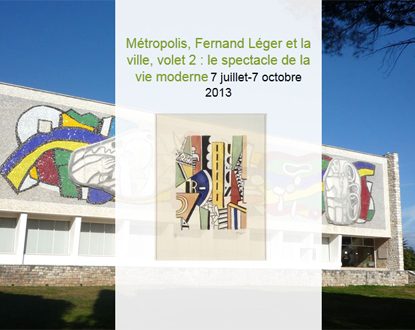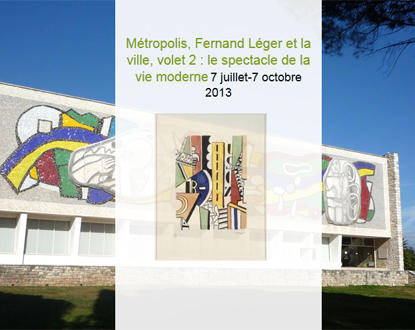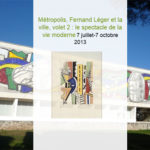
Through three complementary themes, the position of the French capital as a site for the circulation of innovative ideas between 1920 and 1950 — from the avant-gardes to mass consumption — and the concomitant emergence of urban modernity in the artistic imagination are explored.
The Modern Image
Both in its formal and iconographic register, the painting Still Life A.B.C., painted by Fernand Léger in 1927, embodies a new plastic language influenced by photography, cinema, and visual communication. The interwar period marks the birth and subsequent massive spread of illustrated press and advertising, leading to increased circulation of images. Theorized as early as 1925 by László Moholy-Nagy in his work Painting, Photography, Film and analyzed in Walter Benjamin’s premonitory essay A Short History of Photography (1931), the aesthetics of the New Vision advocate breaking down barriers between practices to broaden visual perception and observe urban daily life as an enlightened passerby. While advertising commissions offer photographers a commercial outlet, they also develop their artistic creativity. Additionally, the use of new visual effects (overhead and low-angle shots, close-ups, superimposition…) enriches pictorial experimentation.
Invited by Charlotte Perriand during the International Exhibition of Arts and Techniques in Modern Life in Paris, Fernand Léger contributed to the creation of a massive photomontage intended for the Rural Center.
To glorify the Popular Front’s agricultural policy, several photographs by François Kollar commissioned in 1931 by Horizons de France for his editorial project La France travaille were used for this purpose.
Paris-Paname
In 1953, Fernand Léger proposed to art publisher Tériade to work with Blaise Cendrars on producing a luxury book dedicated to the City of Light. Due to the sudden death of the painter, the album was published posthumously, with a selection of illustrations made by Nadia, the artist’s widow, and without the text of the Swiss writer.
In the exhibition, the dialogue between lithographs and photographs evokes the Parisian landscape where Fernand Léger lived from his move in 1908 to the Ruche located in Montparnasse to his countryside residence in the southern suburbs from 1952 onward. Echoing the images of his friend Robert Doisneau and his student William Klein, his humanist prints pay homage to popular creativity through the picturesque representation of small street trades. To create new perspectives on Parisian urbanism, the painter also adopted photographic aesthetics using bold diagonals and collages of modern infrastructure (viaduct, Eiffel Tower, chimneys).
Paris-Spectacle
Through the representation of social life and popular leisure activities, the striking black-and-white frames of modernist photographers combine with Fernand Léger’s colorful images to convey the dynamism that characterizes the perception of the big city. General curator: Maurice Fréchuret, director of the National Museums of the 20th Century in the Alpes-Maritimes
Curator: Diana Gay, curator at the Fernand Léger National Museum



